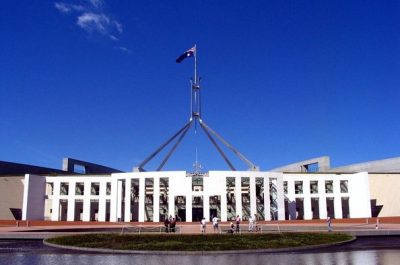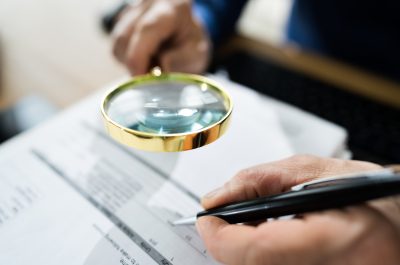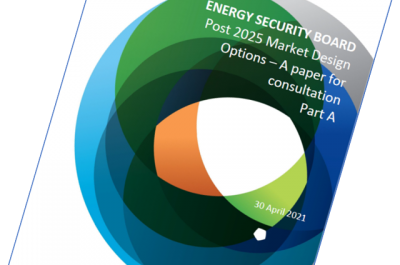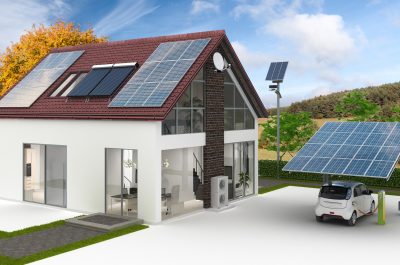Dear Santa, from energy networks
The festive season is upon us and what better way to celebrate than a wish list of gifts the energy sector is hoping to get from Santa Claus this year.
Continued focus on cost and customer outcomes
We don’t want Santa to have to choose between filling stockings with presents and paying power bills. While it would be misleading to suggest that it is easy to bring down customer bills in the short term, concerted efforts and investments across the energy supply chain could help contain future bill increases.
As an industry we owe it to our customers to keep a clear focus on cost and customer outcomes. This also includes ensuring we continue to make the strategic investments over the coming decade that are required to keep bills down well into the future. The delivery of AEMO’s Integrated System Plan (ISP) (noted below) and the transformation of grid operations to enable dynamic operation and integration of customer energy resources such as the continued uptake of solar PV and electric vehicles are all imperative to aid the transition and deliver cheaper energy for customers.
Delivery of a bold and collaborative initiative
In 2020, the Energy Security Board developed the actionable Integrated System Plan. The rules were largely supported by all market bodies and had the backing of the energy ministers. AEMO, mid this year, issued the first actionable ISP under these new rules. This reconfirmed the need to build about 10,000km of new transmission to ensure we can connect the renewable generation our system needs to reach net zero by 2050.
Under AEMO’s plan the cost of the build out sits about $12.7 billion. While the numbers are big, each dollar spent is expected to deliver double that in benefits to customers.
Delivering more transmission is critical in this race to net zero.
Delivering on the plan is not without its challenges as the world progresses to net zero. Supply chains are incredibly tight and rampant inflation has put pressure on the pool of resources to deliver these massive projects.
Progress also cannot be made without collaboration. The past few years have shown the importance of getting the basics right – working with the broader community to build an understanding of the need for a project, improving the relationship with impacted communities, landholders and local governments. Project decisions need to be robust and defendable, and it is important that communities can understand and engage with the project decisions being made.
If Santa could grant us a streamlined approval processes without sacrificing the quality of the needed assessments and solve supply chain issues, we would all be very grateful.
Fit for purpose regulatory framework
The energy market is constantly changing and the services networks provide are evolving along with it. Regulatory methods must appropriately reflect the changing market to ensure they are fit for purpose and meet customer expectations. An example of this is to ensure that we have the right policy settings to rollout community batteries, and thereby deliver on government and community expectations.
Pragmatic approaches are needed to ensure the costs of separating or ‘unbundling’ of multiple sources of electricity generation are minimised. Market frameworks and regulatory approaches should recognise where low-cost network options or existing network infrastructure can provide these services efficiently. Moreover, it is important to do so without crowding out competitive approaches where these are the most efficient solution.
We must ensure that we are not solving for problems of the past rather than truly looking towards the future.
We hope to see Santa continue to future proof our network regulatory framework.
Development of a renewable gas market
Australia is undergoing a dual decarbonisation in gas and electricity markets. New renewable fuels, such as hydrogen and biomethane, have the potential to become complementary energy solutions that will use existing energy infrastructure. Renewable gas certification schemes and targets can drive the transition in gas markets.
Renewable gas certification schemes allow customers to purchase gas with the confidence that what they are receiving is renewable. Furthermore, it signals to businesses the level of demand for renewable energy and encourages investment.
GreenPower is developing a renewable gas certification pilot program and we look forward to its advancement. [1]
Similar to the renewable electricity target, a renewable gas target can be an effective way to encourage technology development. Progress has been made in renewable energy targets in some states already. Implementation of RGTs across all states and nationally would be a Christmas wish come true.
Sensible electric vehicle policy settings
As more electric vehicles make their way to Australian households the more pressure charging will have on the grid. If this goes unmanaged, there is a risk to power reliability and security and of increased bills.
The University of Melbourne and ENA report on EV Integration recommends sensible electric vehicle policy settings at different time horizons and uptake levels. Policy could be a key driver to incentivise customers to charge their electric vehicles when electricity is plentiful and cheaper, leading to reductions in electricity costs and GHG emissions.
A Hydrogen House
In this property market, everyone is wishing for a house for Christmas (just not the interest rate hikes), but we are wishing specifically for the development of a hydrogen house. The house would demonstrate the possibilities of hydrogen to policy makers and communities.
This type if demonstration property shows how hydrogen can be used to power a home and helps dispel myths and common misconceptions about hydrogen. In 2021, the UK Government and Northern Gas Networks opened a hydrogen home fitted with 100 per cent hydrogen-powered appliances to promote hydrogen for consumer uses.
Continued engagement across the sector
Collaborative approaches have proven successful in driving positive long-term outcomes. We have seen how engagement with industry bodies, networks, ministers and the rest of the sector, instead of simply informing, can drive the best customer outcomes. We look forward to this collaboration continuing in 2023.
Wishing all our Energy Insider readers a happy and safe Christmas and new year period.
[1] https://www.greenpower.gov.au/about-greenpower/renewable-gas-certification-pilot



